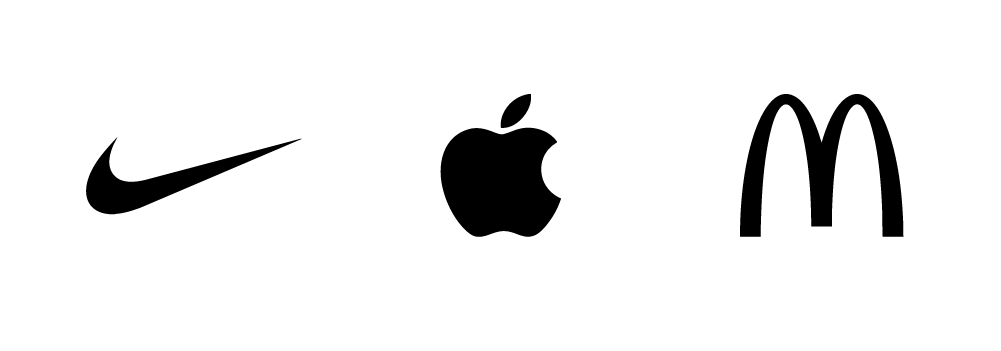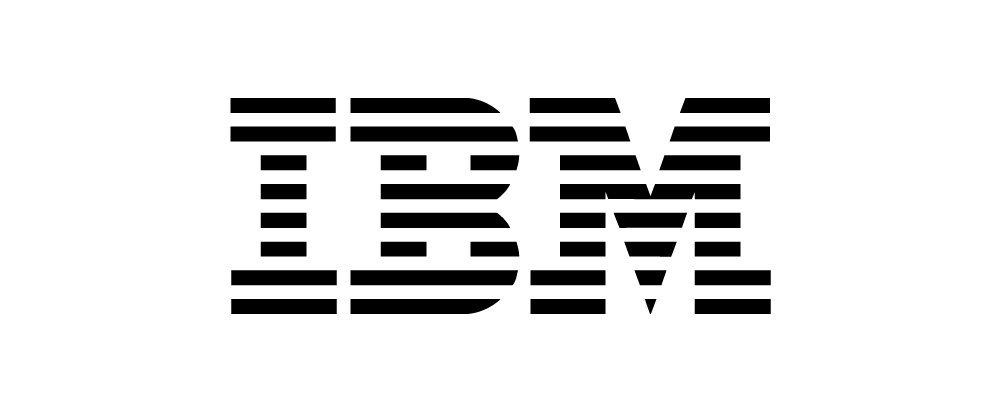
We know them as soon as we see them: The swoosh. The bitten Apple. The golden arches. Some brand marks are so deeply etched into our memory they transcend branding and enter into the realm of culture.
But what exactly makes a brand memorable? Is it the shape, the color, the clever twist? Or is it simply repetition and consistency?
Let’s dive into the truth of the matter: memorability is a mix of art, psychology, and strategy. And understanding that balance is key to creating brands that don’t just sit on a business card or dusty landing page – but live rent-free in the minds of customers for decades to come.
Let’s unpack the core elements that make a brand truly unforgettable and highlight a few modern examples of brand excellence. For starters – let’s begin with what starts it all: the almighty logo.
1. Logo Design: Still the Flag on the Hill
Simplicity. Distinctiveness. Relevance. The most iconic logos distill a brand’s personality into a single, repeatable image.
 Think: the IBM logo by Paul Rand in 1972. Striped, bold, fast – instant recognition, at the very edge of technology of the time.
Think: the IBM logo by Paul Rand in 1972. Striped, bold, fast – instant recognition, at the very edge of technology of the time.
 I may be a bit bias for this one; but can we all agree the alternate Syracuse University logo by B. Martin Pedersen from the late–80s brought it all – the symmetry, the geometry, the hidden shield – an institutional mark that balanced athletics and academics with quiet brilliance.
I may be a bit bias for this one; but can we all agree the alternate Syracuse University logo by B. Martin Pedersen from the late–80s brought it all – the symmetry, the geometry, the hidden shield – an institutional mark that balanced athletics and academics with quiet brilliance.
 Or take Saul Bass’ iconic bell logo for AT&T which could be seen on nearly city street corner, before the mobile phone. Corporate simplicity and brand consistency at its very finest.
Or take Saul Bass’ iconic bell logo for AT&T which could be seen on nearly city street corner, before the mobile phone. Corporate simplicity and brand consistency at its very finest.
A great logo remains foundational to any visual identity. It’s typically the first impression, the visual handshake, the mental shortcut to the brand. But it’s only one piece of the puzzle.
2. Scalable Visual Identity
Memorable brands go beyond logos – they’re well-built systems. That means typography, color palettes, iconography, and layout rules that flex across packaging, digital, merch, and signage.
Google is a masterclass in scalable simplicity. Their material design system gives every touchpoint – from search to smartwatches – feel consistent, without looking identical either. Geometry, motion, and color work together seamlessly across an enormous ecosystem.
Another brand built for scalability is AirBnb and their responsive Bélo logomark, paired with a global typography system and distinctive photography style that scales effortlessly across cultures, digital and physical experiences.
Brands today must be fluid – but never inconsistent. Great visual identity systems balance structure with expression, creating both recognition and range.
3. Audio Cues: Jingles Are Back (But Smarter)
With the rise of short-form video, podcasts, and social audio, one of branding’s most overlooked assets is finding its voice again: the audio cue.
Think Netflix’s ta-dum, Liberty’s catchy jingle, or the melodic “Like a good neighbor…” from State Farm. I haven’t heard the “SE-GA!” startup sound in decades, but even the thought of it – instant recall. That’s the power of sound.
Today’s tech-savvy brands are quietly bringing audio back into the brand system – through custom transition sounds, tactile app feedback, startup tones, and calming hold music. These subtle sonic cues aren’t just aesthetic – they stick.
Because audio is instinctual. It bypasses logic and memory and hits something deeper. When woven into your brand identity, it doesn’t just make you recognizable. It makes you sensational.
4. Tap into Cultural and Personal Nostalgia
Nostalgia is a shortcut to emotion – and emotion is the shortcut to memory. The most enduring brands know how to stir something deep by evoking the past.
Whether it’s Syracuse University reviving its Sherman typeface (originally designed by Frederic Goudy), Miller Lite bringing back their minimalist “Lite” cans, or your local water park still looping a 30-year-old jingle, brands that reference their own history – or tap into shared cultural memories – unlock a powerful kind of recognition.
If your brand has history, nostalgia can take what was stuck in the past and reintroduce it with new relevance. Modern brands remix legacy colors, slogans, jingles, and logotypes to bridge generations and spark instant emotional recall. And even if your brand doesn’t have a personal past to draw from, cultural and historical cues can be just as effective.
5. Brand Tone and Messaging System
Consistency isn’t just visual. The best brands speak in a clear, distinct voice – across every channel. Whether it’s playful, professional, empowering, or irreverent, that tone of voice becomes an emotional anchor for whoever is reading or hearing it.
Patagonia’s brand messaging takes on the voice of a no-nonsense environmental activist. Old Spice goes all-in on the absurdly masculine, humorous tone. While Liquid Death surprises us with a tone that is as rebellious as it is disruptive.
Memorable brands don’t just have a look. They have a feel. One that’s intentionally shaped by rhythm, vocabulary, and voice.
6. Repetition Across Touchpoints
Even the strongest systems start to crack without consistency. And here’s the thing – what feels boring or repetitive to those inside a brand is often exactly what makes it memorable to everyone else.
Repetition rarely gets the credit it deserves for doing the heavy lifting. It’s the unsung hero of brand recognition.
Take FedEx. Everyone loves to point out the “hidden arrow” in the logo – but the real genius is in the color-coded system that powers its sub-brands. Orange for Express. Green for Ground. Red for Freight. Blue for Office. It’s simple. Intentional. Relentlessly consistent. And that’s what makes it stick.
Memorable brands commit. Across every surface and channel, they reinforce the message until it becomes second nature.
Other Brand Systems Worth Noting
Twelve Labs – Pentagram unsurprisingly brought their A game here. Radiant gradients, dimensional typography, and a galloping horsemark? Epic. It’s a kinetic system that communicates intelligence without falling into the usual tech clichés.
Vessel – Landscape designed a brand system where restraint is the signature. Every detail is intentional – minimal, clear, quietly confident. It’s a reminder that great design doesn’t always steal the spotlight. Sometimes, its power lies in holding the frame steady so the purpose can speak.
Shield AI – Originally weighed down by a lackluster identity, Shield AI now leads with clarity and confidence. TinyWins reimagined the brand with bold, modern typography and a refreshed visual system that reflects the sophistication of their autonomous technology – finally aligning perception with product.
MoMA – The Museum of Modern Art teamed up with Order to build a modular identity system that’s as thoughtful as the work it showcases. Clean type, smart motion, and a flexible layout built around exhibit photography turn the brand into its own kind of gallery. It doesn’t just frame the art – it becomes part of the experience. Exceptional work.
Final Thought: Logos Get You Recognized. Systems Get You Remembered.
Logos are critical – but memorable brands are multi-sensory ecosystems. They’re designed to show up the same way every time, everywhere. Through shape, sound, words, movement, and imagery, the brands who get remembered are the ones offering exceptional and consistent experiences.
So if you’re creating a brand – or leveling up an existing one – ask yourself:
- Does it show up consistently across every medium?
- Does it connect emotionally and functionally?
- Does it have the legs to last and the flexibility to evolve?
When the answer is yes, you’re not just building a brand.
You’re building memory.
Need a brand that is as bold as the mission behind it?
Let’s build something unforgettable together. Contact Sentripetal.





